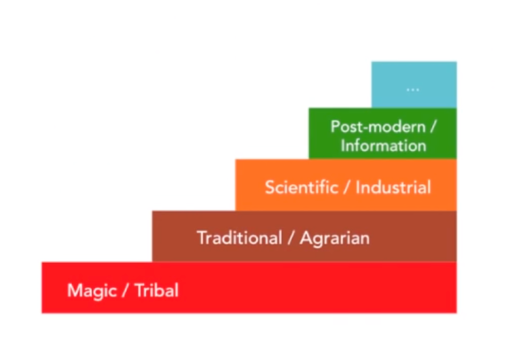The way we work isn’t working anymore. In my consulting and coaching work, I hear complaints not only from employees, but also from managers. Some even suggest it’s time to reinvent organizations. To do that, let’s first look at the history of organizations and find out how we got here.
How come we have so many problems getting people to successfully work together? As a coach, I see many of the obstacles. Some experts blame the following:
- Traditional organizational hierarchies
- Incentives that fail to motivate
- Disengaged employees (two-thirds of the workforce)
- A system that overcompensates management while undervaluing frontline workers
New ways of working have already evolved, explains corporate coach Frederic Laloux in Reinventing Organizations: A Guide to Creating Organizations Inspired by the Next Stage of Human Consciousness. He poses an important question:
Can we create organizations free of politics, bureaucracy and infighting; free of stress and burnout; free of resignation, resentment, and apathy; and free of the posturing at the top and the drudgery at the bottom?
I can’t help but think we’re on the verge of a shift in the way we organize and manage people to work together. Others aren’t so sure. Is it really possible to reinvent organizations? Can we devise a new model that makes work more productive—and even more importantly—truly fulfilling and meaningful?
Just look at the course of history: humankind has repeatedly reinvented how people come together to get work done, each time creating a new, vastly superior organizational model. What’s more, this historical perspective hints at a new organizational design that may be just around the corner, waiting to emerge.
A Look at Organizations’ Evolving Stages
A review of the major stages in the development of human consciousness and organizational development reveals how we can potentially reinvent work to be more productive and meaningful.
Many scientists and historians have categorized how we organize to get things done, but naming the stages is always a struggle. It’s challenging to use a single adjective to capture the complex reality of any organizational model.
One way to understand and clarify developmental stages is to assign descriptive names and colors, which vary according to experts. Laloux uses names and colors suggested by Ken Wilber, Integral Theory, Spiral Dynamics and others.
So in this next series of posts, I’ll review these stages to see how we’ve evolved our organizations and take a look at what might be the next emerging model. This review has made me think deeply about how we need to change our basic assumptions about work.
In the meantime, if you haven’t yet read Laloux’s book, I highly recommend it. It will open your mind to new ideas. As always, I’d love to hear from you. You can contact me here or on LinkedIn.

Did You Enjoy This Article?
Join thousands of other smart business owners like yourself & get our Proffittable Times newsletter.
It's filled with actionable content you can apply immediately.
Sign up now to get started!
– Coach Nancy










